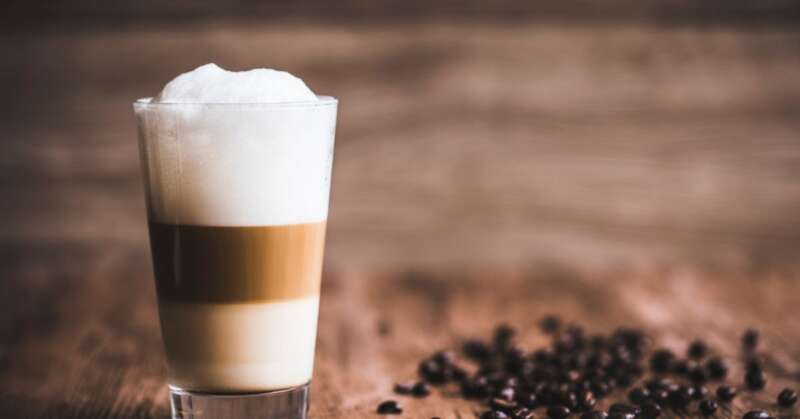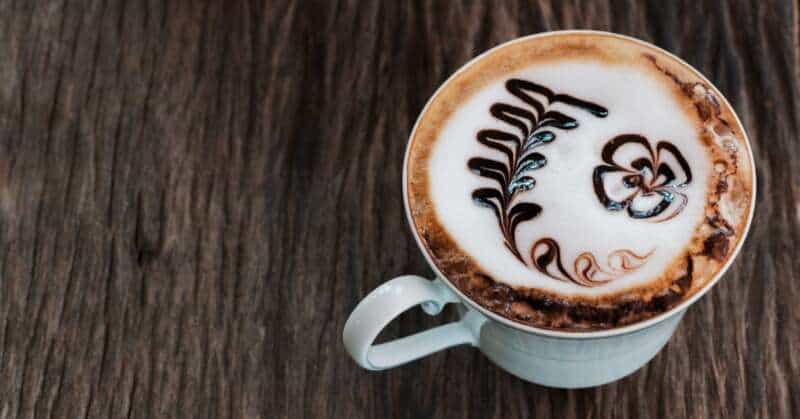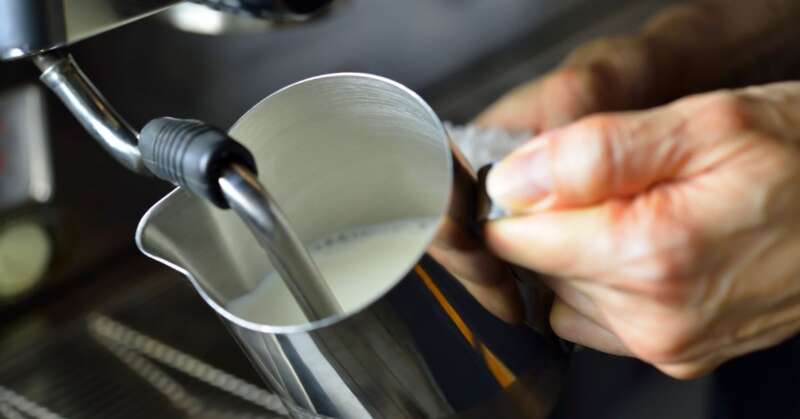Once upon a time, there wouldn’t have been a coffee menu. Coffee was coffee, and tea was tea, right?
Thankfully, times have changed, and we have so many choices available to us now. But with all of these options, it can get confusing.
Two coffee drinks that people often wonder about are latte and mocha. If you find yourself wondering about either of these drinks, we’re here to help.
So, latte vs mocha, what is the difference? Let’s find out.
What Is the Difference Between Latte and Mocha?
To cut to the chase for those eager to find out, the main difference between mocha vs latte is the addition of chocolate.
The mocha coffee and café latte have the same ingredients: espresso, steamed milk, and milk foam.
However, there are slight differences in the amount of steamed milk, with the latte having more milk than the mocha.
Let’s take a look at things in more detail.
What Is a Latte?
Caffè latte as it’s known in Italian, is an espresso-based coffee drink that originates in Italy.
Two primary ingredients are steamed milk (latte is Italian for milk) and espresso coffee. There’s also a small amount of milk foam on top.
Though most people understand caffè latte and call it by this Italian name, in some parts of the world, it’s referred to by the French café au lait.
What Makes up A Latte Precisely?
The proportions of a latte are broken down into sixths. One-sixth of foamed milk, one-sixth of espresso, and four-sixths of steamed milk.
As you can see by these proportions, this coffee drink is more like milk with coffee. Some people use a double shot for increased caffeine, but steamed milk is the dominating taste.
How Is a Latte Made?
Making a latte is more complex than combining all ingredients; there is a real craft to it.
The steamed milk should be poured through the espresso so that it is evenly mixed.
The pour should be gradual so that the latte is well-aerated. This also gives the barista an excellent base to make latte art, another skill worth mentioning.
Latte History
The origins of the latte are fascinating. It’s believed that Italians invented this drink as a breakfast coffee back in the 17th century.
It started becoming more popular in the 20th century in America when people wanted a weaker-tasting drink compared to a cappuccino.
Over the last two decades, the latte has become one of the most popular coffee drinks.
It has paved the way for other spin-offs like the cafe breve or breve latte, a creamier and thicker drink. Latte art has also become a popular trend!

What Is a Mocha?
Caffè mocha, mocha, mochaccino… these are all a chocolate variation of the caffè latte. The mocha is thought to be a version of the caffè Bicerin, a layered drink consisting of espresso, drinking chocolate, and milk, dating back to 17th-century Turin.
Unlike the Bicerin, the caffè mocha is mixed. It’s believed the name comes from a variation of coffee beans (Mocha beans, a type of Arabica beans) that come from a Red Sea port city of the same name.
Mocha is a city in Yemen, south of the Arabian Peninsula in Western Asia.
With its delicious chocolateyness, the mocha is a great choice for people who like sweeter drinks. Their coffee flavor is more subtle with the addition of chocolate.
What Makes up A Mocha Precisely?
Mocha contains espresso, chocolate syrup, and steamed milk in a ratio of 2:2:1. The mocha is, therefore, much more complex in terms of flavor than a latte.
The ratios might differ between coffee shops, but usually, there are equal parts espresso and chocolate syrup with a top of steamed milk.
Besides your general mocha, there are also mocha spin-off drinks like the mochaccino, which has one-third espresso and equal parts steamed milk and milk foam, and the mocha latte, which is five-eighths steamed milk, one-eight espresso, chocolate syrup, and milk foam.
How Is Mocha Made?
Firstly, the barista will pull the espresso shots using the espresso machine. They will then pour on the chocolate syrup and steamed milk.
Some coffee shops add whipped cream and chocolate sprinkles for a decadent treat.
Mocha History
Before the Bicerin, which was named after the coffee bar where it was served, the mixture of coffee and chocolate is believed to have come from a drink containing coffee, cream, and chocolate called the bavaresia.
After Cafe Bicerin brought this drink to prominence in Turin, it began traveling across Europe to America, where it became known as mocha.
Nowadays, most coffee shops sell a mocha drink of sorts. Whether topped with whipped cream or decorated with latte art, it will always be a delicious mix of hot chocolate and coffee.

Mocha vs Latte: Which One Is Stronger?
Though both coffee drinks contain the same amount of espresso, the amount of hot milk used differs. This means that their strength of taste is different. The cafe mocha will have a more robust flavor due to the drink’s lower amount of steamed milk.
As its name suggests, a cafe latte has more milk. Latte generally has twice as much milk as coffee, but mocha only has a touch of milk.
As a result, a cafe mocha will taste much more robust and concentrated. Because of the latte’s milk ratio, it will taste more diluted.
The mocha is the sweeter of the two, so if you enjoy a sweeter latte, you will like the mocha.
What About Caffeine Content?
Though the cafe mocha does taste stronger than the cafe latte, we’ve already established that this is down to the other ingredients rather than the amount of coffee in the drinks.
Many people often choose a drink based on its caffeine content. They might be seeking a significant pick-me-up or want to avoid being unable to sleep!
When it comes to mocha vs latte, the mocha will have more caffeine – but only by a small amount. Both are espresso drinks. However, it’s worth remembering that chocolate – particularly dark chocolate – also contains caffeine.
Each 1 oz espresso shot will contain around 63 milligrams of caffeine. Dark chocolate contains 13 milligrams of caffeine per ounce. So if your mocha is made with dark or milk chocolate, you’re adding caffeine.
White chocolate, however, doesn’t contain caffeine, so a white mocha will have the same caffeine content as a latte.
What About Sugar Content?
If you’re trying to reduce your sugar consumption, avoid the mocha. The addition of chocolate syrup to this espresso drink means it’s high in sugar compared to other espresso-based drinks. Adding whipped cream will add more sugar too.
Of course, many people also add syrups for a sweeter latte, so they’re not exempt from sugar overload.
For example, the McDonald’s McCafé Mocha contains 42 g of sugar per 12 oz. This is equivalent to 1.5 cans of Coke. On the other hand, the Au Bon Pain Frozen Caramel Latte contains a massive 91 g of sugar, equivalent to 2.3 cans of Coke!
More About the Milk Used for Latte and Mocha Drinks
Like many other coffee drinks, latte and mocha use steamed and foamed milk. These are created using an espresso machine’s steam wand. At home, many people have a milk-frothing device instead.
A milk wand will send steam into the milk, which serves two purposes: it heats it and creates air bubbles.

What Is the Difference Between Steamed Milk and Foamed Milk?
The big difference between steamed milk and milk foam is how many air bubbles are in the mix.
Frothed milk is classed as milk foam that has expanded to double its volume due to the addition of air bubbles.
On the other hand, steamed milk is only around one-third more voluminous than standard milk as it is less aerated.
For steamed milk, the wand is put around an inch into the cold milk and is angled, creating a whirlpool with the steam.
This position is held until the milk temperature is between 140 °F and 150 °F.
For frothed milk, the steaming wand is also placed in the same position, but as foamy milk starts to appear on the top, the wand is passed downwards until it is positioned at the bottom of the milk jug.
Can You Make a Latte Easily at Home?
With the right tools and techniques, you can easily make a traditional latte in your home. Here are the steps to take:
- Brew an espresso using your home espresso machine
- Prepare the milk. If your machine doesn’t have a wand, you can warm it on the burner at medium heat.
- When the milk is at temperature, pour it into your cup.
- Getting milk foam is tricky on the burner, so you might need to skip this part. If you have a steam wand, you can add your layer of foamy milk at the end. Be careful not to overheat the milk – scalded milk doesn’t taste great.
Making a latte at home is as easy as making mocha, only if you know the correct technique. The ingredients include milk, espresso, and cocoa powder.
If you’re feeling creative, you could also create your own latte art!
Can You Make a Mocha Easily at Home?
It’s also possible to make mocha at home too. You’ll need milk, espresso, and chocolate (drinking chocolate, cocoa powder, or syrup can all be used). Here are the steps to take:
- Add your chocolate to the cup first. Fill it to around one-quarter.
- Add your espresso shots and mix.
- Fill the cup with one-quarter frothed milk and one-quarter steamed milk. If you don’t have a steam wand to incorporate air bubbles into the milk, warm some milk. It won’t be the same, but you’ll still have a delicious milky drink.
- Before serving, mix it together gently. Add whipped cream if you like.
Can You Make a Latte or Mocha at Home without An Espresso Machine?
Yes and no. You need to have a costly machine and have learned how to use it properly to make a latte or mocha as good as your local coffee shop’s local barista. That said, you can still make a pretty mean drink!
As these drinks are espresso-based, getting an excellent espresso-type coffee is vital. Whether you use arabica coffee beans or Robusta, a blend or single-origin, you’ll need to prepare the ground coffee well to get that great espresso flavor.
It’s less about having a fancy espresso machine and more about your only personal tastes.
Here are some ways to make the coffee for your latte and mocha without an espresso maker.
Use an Aeropress
Without an espresso maker, an Aeropress is the next best thing. Your coffee will have a different texture, but it should have a similar flavor and taste.
Use a Moka Pot
Not to be confused with mocha, the Moka pot is an excellent way of making coffee. However, it’s not the same taste as espresso, as seen in this article. Nevertheless, it’s still a strong coffee that makes excellent coffee drinks at home.
Use a French Press
Though a French press will only partially give you the strength and hit you need, you can use it to make a latte-style or mocha-style coffee drink. You will need to use more coffee, though.
Final Thoughts on Mocha vs Latte
Now you know that mocha and latte coffees have the same base ingredients except for adding chocolate.
Whether you prefer one over the other depends on your taste and caffeine and sugar limitations.
However, it’s safe to say that coffee lovers worldwide enjoy both drinks equally!